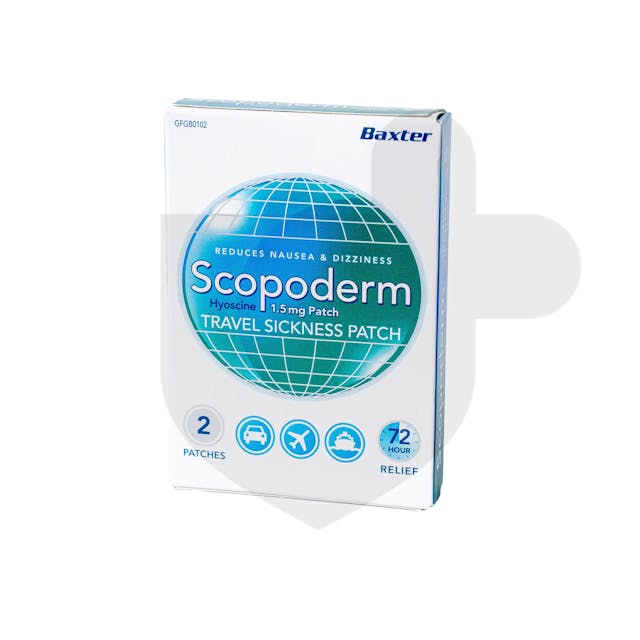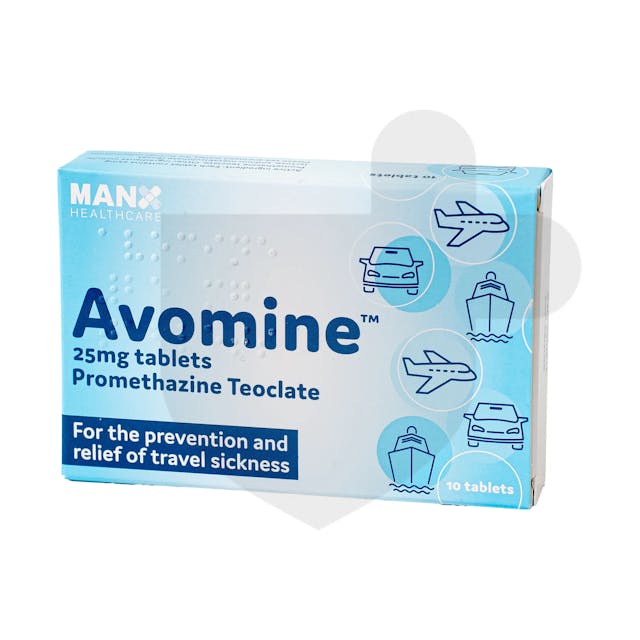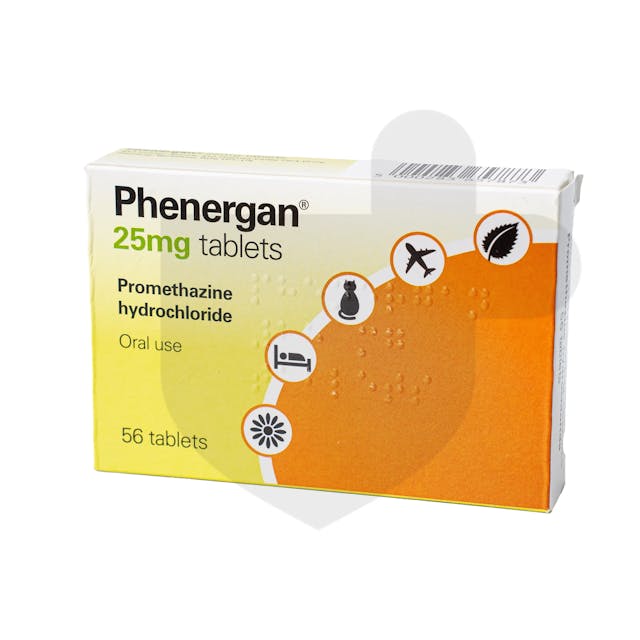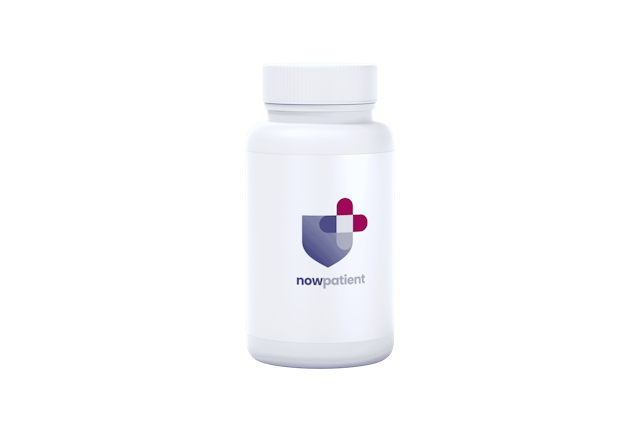Motion sickness
Treatment & Medications
With NowPatient's private treatment plans you can treat Motion sickness safely and easily in a few simple steps. Get started by selecting the available treatments you are interested in below or by hitting the start consultation button.
This content is intended for UK audiences only
Available treatments
Compare treatments
Get started with the right treatment for you
Treatments & Medications
delivery
service

Motion sickness is a common condition that affects many individuals during various forms of transportation or when exposed to certain types of motion. It can cause discomfort and unpleasant symptoms such as dizziness, nausea, and vomiting. Motion sickness is also known as kinetosis, seasickness, travel sickness, airsickness, carsickness, space motion sickness, and space adaptation syndrome.
In this comprehensive guide, we will explore the causes, symptoms, and remedies for motion sickness, providing you with valuable insights on how to prevent and alleviate this condition.
Introduction
Motion sickness has been recognized and studied for centuries, with historical references dating back to ancient civilizations. Even NASA has acknowledged the impact of motion sickness on astronauts during space travel. This guide aims to provide a comprehensive understanding of motion sickness, its causes, symptoms, and remedies, enabling individuals to navigate their travels and experiences more comfortably.
What is motion sickness?
Motion sickness is a condition characterized by a feeling of uneasiness and discomfort caused by certain types of motion. It can occur when the brain receives conflicting signals from the eyes, inner ears, muscles, and joints, leading to a sense of disorientation and imbalance. The most common symptoms of motion sickness include dizziness, nausea, vomiting, pale skin, and increased salivation.
Causes of motion sickness
Motion sickness occurs when there is a mismatch between the sensory information received by the central nervous system. This sensory conflict can be triggered by various factors, such as traveling in a car, bus, train, airplane, or boat. Other triggers include amusement park rides, virtual reality experiences, and even reading while in a moving vehicle. The conflicting signals from the visual, vestibular, and somatosensory systems contribute to the development of motion sickness symptoms.
Understanding the symptoms
Motion sickness can manifest in different ways, with symptoms varying from person to person. The most common symptom is nausea, which can range from mild discomfort to severe vomiting. Other symptoms include dizziness, fatigue, headache, increased salivation, a cold sweat, and pale skin. It is important to recognize these symptoms and take appropriate measures to prevent or alleviate motion sickness.
Factors affecting motion sickness susceptibility
Individual susceptibility to motion sickness can vary based on several risk factors. Women, children, and individuals with a history of migraines or vestibular disorders are more prone to experiencing motion sickness. Age, fitness level, and hormonal fluctuations also play a role. Genetic factors may contribute to susceptibility, although further research is needed to fully understand the genetic basis of motion sickness.
Prevention strategies
Preventing motion sickness is key to enjoying a comfortable journey. There are various strategies that can help minimize the risk of motion sickness. Choosing the right seat, focusing on the horizon, avoiding triggers, having a source of fresh air, maintaining a proper diet and hydration, and utilizing mind-body techniques can all contribute to preventing motion sickness. By implementing these strategies, individuals can reduce the likelihood of experiencing motion sickness symptoms.
Choosing the right seat
The seating position can significantly impact motion sickness susceptibility. Opting for the front seat in a car or bus, over the wing of an airplane, or in a cabin towards the front or middle of a boat can provide a smoother ride. Facing forward and having a clear view of the horizon can also help minimize motion sickness.
Focusing on the horizon
Keeping your eyes fixed on a stable object in the distance, such as the horizon, can provide visual cues that align with the motion of the vehicle. This helps reduce the sensory conflict that triggers motion sickness. Avoiding activities that require focused visual attention, such as reading or using electronic devices, can also minimize symptoms.
Avoiding triggers
Identifying and avoiding specific triggers that worsen motion sickness is essential. This may include avoiding amusement park rides that involve intense motion or virtual reality experiences that simulate movement. Additionally, avoiding strong odors, spicy or greasy foods, and cigarette smoke can help prevent motion sickness.
Proper diet and hydration
Maintaining a balanced diet and staying hydrated can contribute to overall well-being and potentially reduce the risk of motion sickness. Eating light meals or snacks that are low in calories before traveling and drinking plenty of water can help alleviate symptoms. Avoiding heavy meals and limiting alcohol consumption before and during travel can also be beneficial.
Mind-body techniques
Various mind-body techniques can help alleviate motion sickness symptoms. Deep breathing exercises, meditation, and focusing on relaxation can help calm the mind and reduce anxiety associated with motion sickness. Some individuals find relief through acupressure wristbands, which apply pressure to specific points on the wrist believed to alleviate nausea.
Medications for motion sickness
In some cases, medications may be necessary for the prevention or treatment of motion sickness. There are both over-the-counter and prescription options available, depending on the severity of symptoms and individual needs.
Over-the-counter options
Over-the-counter antihistamines, such as diphenhydramine (Benadryl) and dimenhydrinate (Dramamine), can help alleviate motion sickness symptoms. These medications work by blocking histamine receptors in the brain, reducing the signals that trigger nausea and vomiting. However, they can cause drowsiness, dry mouth and blurred vision as a side effect. Other over-the-counter options include cyclizine and promethazine, both of which also cause drowsiness, but to a lesser extent.
Prescription medications
For individuals with more severe motion sickness or those who do not respond well to over-the-counter options, prescription medications may be recommended. Scopolamine, available in a patch form, can be applied behind the ear several hours before travel to provide extended relief from motion sickness symptoms. Meclizine is another option, but is currently not available in the U.K. It is important to consult with a healthcare professional to determine the most appropriate medication based on individual needs and potential interactions with other medications.
Natural remedies and alternative therapies
In addition to medications, natural remedies and alternative therapies may offer relief from motion sickness symptoms. These options can be used alone or in conjunction with conventional treatments. Some natural remedies that have shown promise in alleviating motion sickness include ginger, peppermint, and acupuncture.
Ginger
Ginger has long been used as a natural remedy for various digestive issues, including nausea. Studies have shown that ginger may help alleviate motion sickness symptoms. It can be consumed in various forms, such as raw ginger, ginger ale, ginger tea, or ginger candies. However, it is important to consult with a healthcare professional before using ginger, particularly if you are on blood-thinning medications or have any underlying health conditions.
Peppermint
Peppermint is another natural remedy that may help calm the body and alleviate nausea. Whether consumed as peppermint tea or through inhalation of its aroma, it can provide a soothing effect on the digestive system. While peppermint is generally safe, individuals with gastroesophageal reflux disease (GERD) or certain gastrointestinal conditions should exercise caution and consult with their healthcare provider.
Acupuncture and acupressure
Acupuncture and acupressure are alternative therapies that involve stimulating specific points on the body to alleviate various symptoms, including nausea and vomiting. Some individuals find relief from motion sickness through the stimulation of a specific point just below the wrist. Acupressure bands are available and can be worn during travel to provide continuous pressure to this point.
Motion sickness in children
Motion sickness is particularly common in children, with susceptibility peaking between the ages of 5 and 12. It is important to address motion sickness in children and take appropriate measures to prevent and alleviate their symptoms. Special considerations should be taken into account when using medications or alternative therapies for children, and consulting with a pediatrician is recommended.
Special considerations for pediatric patients
When addressing motion sickness in children, it is crucial to consider their age, weight, and individual needs. Certain medications may not be suitable for young children, and dosing should be adjusted accordingly. Alternative therapies, such as acupressure wristbands, can be used in children but should be supervised to ensure proper application and comfort.
Medications and treatments for children
Over-the-counter options such as dimenhydrinate (Dramamine) and diphenhydramine (Benadryl) can be used in children under the guidance of a healthcare professional. Dosages should be determined based on the child’s age and weight. It is important to closely monitor children for any adverse effects and consult with a pediatrician if symptoms persist or worsen.
Motion sickness at different ages and stages of life
Motion sickness can affect individuals of all ages, but its prevalence and impact may vary depending on the stage of life. Understanding how motion sickness presents in different age groups can help tailor prevention strategies and treatment approaches accordingly.
Motion sickness in adults
While motion sickness can affect individuals of all ages, adults may have developed coping mechanisms or built a tolerance to certain types of motion. However, susceptibility can still vary among adults, and those with underlying conditions such as migraines or vestibular disorders may be more prone to experiencing motion sickness. Implementing preventive measures and considering appropriate medications or alternative therapies can help manage symptoms in adults.
Motion sickness in the elderly
As individuals age, their susceptibility to motion sickness may change. Older adults may experience a decline in motion sickness symptoms due to habituation or adaptation to certain types of motion. However, age-related changes in the vestibular system and other physiological factors can make some older adults more susceptible to motion sickness. Taking into account any age-related conditions or medications can help determine the most suitable prevention and treatment strategies for elderly individuals.
Motion sickness in pregnant women
Pregnancy can introduce hormonal fluctuations that may increase the risk of motion sickness in women. Additionally, the changes in the vestibular system and increased sensitivity to sensory inputs during pregnancy can contribute to motion sickness symptoms. Pregnant women should exercise caution when considering medications or alternative therapies and consult with their healthcare provider to ensure the safety and effectiveness of any interventions.
Motion sickness and other related conditions
Motion sickness can be associated with other medical conditions or disorders, including migraines, vestibular disorders, and Parkinson’s disease. Understanding the relationship between these conditions and motion sickness can provide insights into their overlapping mechanisms and potential treatment approaches.
Migraine and motion sickness
There is a strong association between migraines and motion sickness. Many individuals who experience migraines also report increased susceptibility to motion sickness. Both conditions involve disturbances in the vestibular system and sensory processing, contributing to shared symptoms. Managing migraines and implementing preventive strategies for motion sickness can help alleviate symptoms in individuals with this dual diagnosis.
Vestibular disorders and motion sickness
Vestibular disorders, such as Meniere’s disease or vestibular migraine, can increase the risk of motion sickness. These conditions affect the functioning of the vestibular system, leading to imbalances in sensory inputs and an increased likelihood of experiencing motion sickness symptoms. For individuals with vestibular disorders, a comprehensive management approach that addresses both the underlying condition and motion sickness is essential.
Parkinson’s disease and motion sickness
Parkinson’s disease, a neurodegenerative disorder affecting movement and balance, can also contribute to motion sickness symptoms. The disrupted communication between the brain and the body’s movement sensors can lead to a heightened susceptibility to motion sickness. Managing Parkinson’s disease symptoms and incorporating preventive measures for motion sickness can improve overall quality of life for individuals with this condition.
Conclusion
Motion sickness is a common condition that can significantly impact individuals’ travel experiences and daily activities. Understanding the causes, symptoms, and remedies for motion sickness is crucial in managing and preventing its occurrence. By implementing preventive strategies, considering appropriate medications or natural remedies, and seeking guidance from healthcare professionals, individuals can effectively alleviate motion sickness symptoms and enjoy a more comfortable journey.
In conclusion, motion sickness is a complex condition influenced by various factors, including sensory conflicts and individual susceptibility. With the knowledge and strategies provided in this comprehensive guide, individuals can navigate their travels with greater ease and minimize the discomfort associated with motion sickness. Remember to consult with healthcare professionals for personalized advice and recommendations tailored to your specific needs.
Sources
- NHS motion sickness
- Better Health – Motion sickness
- Familydoctor – Motion sickness
- Mayoclinic – Motion sickness symptoms and causes
- NIH – Motion sickness
- Medicalnewstoday – Motion sickness
Medical Disclaimer
NowPatient has taken all reasonable steps to ensure that all material is factually accurate, complete, and current. However, the knowledge and experience of a qualified healthcare professional should always be sought after instead of using the information in this page. Before taking any drug, you should always speak to your doctor or another qualified healthcare provider.
The information provided here about medications is subject to change and is not meant to include all uses, precautions, warnings, directions, drug interactions, allergic reactions, or negative effects. The absence of warnings or other information for a particular medication does not imply that the medication or medication combination is appropriate for all patients or for all possible purposes.
What is NowPatient
Telehealth and Online Pharmacy
NowPatient is a licensed online pharmacy and doctor service that is available around the world. Our service is FREE and packed with valuable features that can benefit your health such as medication reminders, educational blogs, medically approved symptoms checker, UK NHS online pharmacy, private treatment plans, Rx Advantage card, health conditions information, affordable medications options, genetic testing, home test kits, health risks, pollen meter, air quality monitor, weight loss plans, drug savings programs and lots more!

WHY WE BUILT NOWPATIENT
To improve the lives of everyone by making high-quality care accessible and convenient
We are here to improve lives. Our service gives you access to smart features and resources that can help empower you to take control of your health and improve your health outcomes. All this, in one place, for FREE. We strive to bring a fresh perspective to managing health. NowPatient can be accessed by downloading the App or using your web browser.
Download our app today

Can I trust NowPatient
Meet our medical team
We are a passionate group of clinicians and medical writers covering a broad range of specialities with experience operating in health systems in the United Kingdom & United States. Providing excellent care and advice is at the heart of everything we do. You can read more about our medical team by visiting the medical team page or learn more about how we curate content by visiting our editorial process



